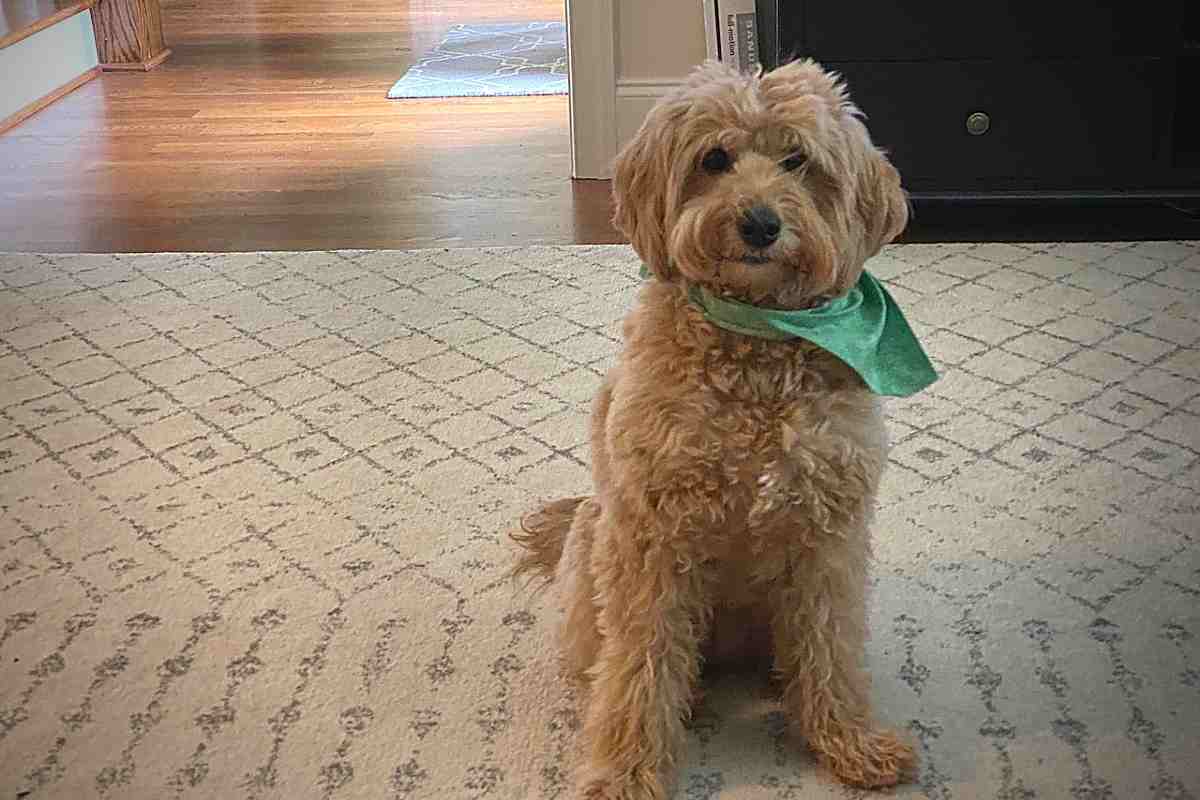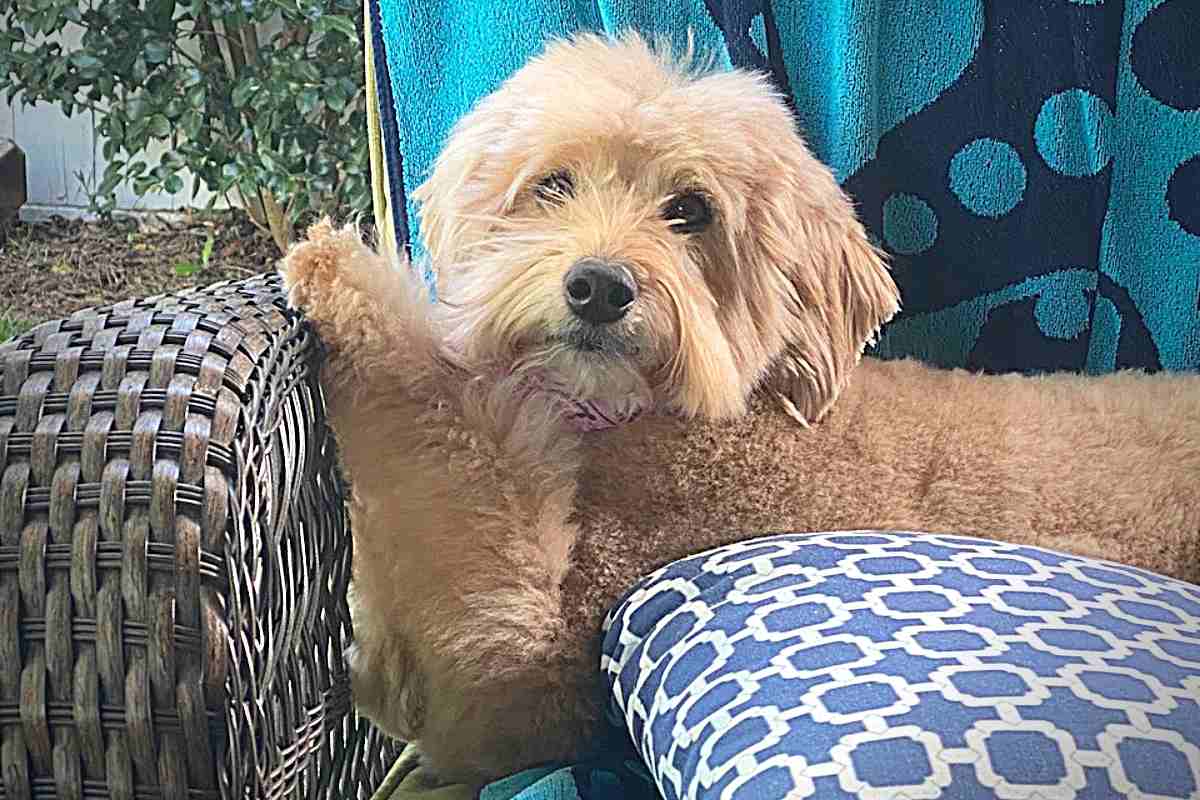At What Age Is A Miniature Goldendoodle Fully Grown?
You have probably heard people say that Miniature Goldendoodles make the best pets. Well, this is true because these dogs are intelligent, playful, loyal, and non-aggressive. They are also social and always eager to please their owners.
Knowing all these good traits about Miniature Goldendoodles, I wondered about the age at which these dogs become fully grown. I conducted research, and I have discussed the results of that research below.
At What Age Is a Miniature Goldendoodle Fully Grown
Expect your mini Goldendoodle will be fully grown when they are 1 to 2 years of age. Each mini doodle is unique, but this is a good rule of thumb.
Did you know you can estimate when your Miniature Goldendoodle will be fully grown using its weight and height? Keep reading and I will tell you more!
Miniature Goldendoodle puppies are likely to have half of their adult weight when they are four months old. When they are 7 to 10 months old, their weight is likely to start tapering off. When they are one or two years old, they are likely to start gaining more weight.
These dogs do not grow fast when it comes to their heights. They are likely to reach their maximum height when they are 1-year or 2-years old. However, if you feed them well, they will likely reach their maximum height and weight faster.
What Really Are Miniature Goldendoodles
Miniature Goldendoodles are a crossbreed of Golden Retrievers and miniatures or Poodles. Most of them are around 20 inches tall and weigh around 50 pounds. Their size makes them good companions to small dogs and cats. They are easy to train since they are fast learners and are likely not to do anything that will make you sad. They also eat less food and do not occupy a lot of space.
How Are Miniature Goldendoodles Different from Toy Goldendoodles
Miniature Goldendoodles are not so much different from toy Goldendoodles. However, they are different when it comes to their sizes. Miniature Goldendoodles weigh around 50 pounds when fully grown, while toy Goldendoodles weigh around 35 pounds.
If you are convinced to buy a Miniature Goldendoodle and not a toy Goldendoodle, there are several types that you will need to choose from. A reputable breeder will tell you more about these types. To avoid the stress of looking for a reputable breeder, we have discussed the common types of Miniature Goldendoodles.
Types of Miniature Goldendoodles
You have probably seen the strange numbers and letters that are written before the word mini Goldendoodle. For instance, you might have come across the words F1 and F1B before the word mini Goldendoodle. These letters represent the type of a Miniature Goldendoodle. You can have an F1, F2, F3, F1B, F2B, F1B, and F2BBMiniature Goldendoodle.
F1Miniature Goldendoodle
F1Miniature Goldendoodles are the first generation of Miniature Goldendoodles. They are a crossbreed of 100% Poodles and 100% Golden Retrievers. Therefore, they are 50% Golden Retriever and 50% Poodle.
These dogs are healthier than Poodles and Golden Retrievers. However, it is hard to guarantee their specific physical appearance because their appearance depends on the genes they inherit. For instance, Miniature Goldendoodles that inherit Poodle genes are likely to have a curly coat like Poodles. On the flip side, Miniature Goldendoodles that inherit Golden Retriever genes will have a smooth and straight coat like Golden Retrievers.
F1B Miniature Goldendoodles
F1B Miniature Goldendoodles are a crossbreed of F1 Miniature Goldendoodles and purebred Poodles. Therefore, they are 75% Poodle and 25% Golden Retriever. People love this breed because of its hypoallergenic coat and non-shedding characteristic.
F1B Miniature Goldendoodles have a curly coat and are less healthy than F1 Miniature Goldendoodles. If you buy one of them, you will need to groom it by trimming and brushing its hair. Dog clippers will help you to do this perfectly.
F1BB Miniature Goldendoodles
FIBB Miniature Goldendoodles are the perfect dogs for people with pet allergies. They are a crossbreed of F1B Miniature Goldendoodles and purebred Poodles. Therefore, they are 12.5% Golden Retriever and 87.5% Poodle. Breeders prefer to produce this breed because it is more non-shedding and hypoallergenic than F1B and FI Miniature Goldendoodles.
These Miniature Goldendoodles have a very curly coat. Therefore, if you have one of them, you will need to
F2 Miniature Goldendoodles
F2 Miniature Goldendoodles are a crossbreed of two F1 Miniature Goldendoodles. Therefore, they are 50% Golden Retriever and 50% Poodle. These Miniature Goldendoodles are not common since breeders do not love breeding them due to their unpredictable genetics. It is hard to predict their coat hair, coat type, and the amount of hair they will shed.

F2B Miniature Goldendoodles
F2B Miniature Goldendoodles are a crossbreed of F1 Miniature Goldendoodles and FIB Miniature Goldendoodles. Therefore, they are 37.5% Golden Retriever and 62.5% Poodle. Breeders also make F2B Miniature Goldendoodles by breeding two F1B Miniature Goldendoodles.
F2B Miniature Goldendoodles have a wavy coat because they have a great amount of Poodle genes. As a result, they do not shed a lot of hair. However, there are some F2B that shed a lot of hair.
F2BB Miniature Goldendoodles
F2BB Miniature Goldendoodles are a crossbreed of F2B Miniature Goldendoodles and purebred Poodles. Therefore, they are 18.75% Golden Retriever and 81.25% Poodle. Compared to other second-generation Miniature Goldendoodles, F2BB Miniature Goldendoodles are the most non-shedding and hypoallergenic second-generation Miniature Goldendoodles. Therefore, this is the pet breed that you should buy if you have extreme pet allergies.
F3 Miniature Goldendoodles
F3 Miniature Goldendoodles are a crossbreed of two F1BMiniature Goldendoodles. Breeders can also produce them by crossbreeding two F2 Miniature Goldendoodles. As a result, Poodle genetics make a great percentage of their genetics.
Now that you know the different types of Miniature Goldendoodles, you need to know how to feed them. Feeding them well will help them grow and mature fast. Below is a discussion on how to feed Miniature Goldendoodles.
How to Feed Your Miniature Goldendoodle
Just like other puppy owners, you might be tempted to feed your Miniature Goldendoodle every other time. Doing that is not right as it may make your dog develop serious health problems.
To ensure that your Miniature Goldendoodle grows fast and remains fit:
- Feed it at least three time a day for the first few months.
- After six months, start feeding two times a day.
Ensure that you give it the correct amount of food and that the dog exercises for at least 20 minutes a day.
What Foods Should You Give Your Miniature Goldendoodle
If possible, try to give your Miniature Goldendoodle a balanced diet. With such, it will always have a healthy weight. Also, avoid giving it soya, wheat, and corn foods. You should also not give it milk, dairy products, and eggs.
Dr. Sara Redding Ochoa, DVM suggests a dog food with at least 22% protein as the #1 ingredient.
Do You Need to Give Your Miniature Goldendoodle Much Attention
As mentioned earlier, Miniature Goldendoodles are social. Therefore, you should give your Miniature Goldendoodle as much attention as you can. Spend quality time with it and take it to the dog park. If possible, take it to a friend’s house where other friendly animals live.

The Bottom Line
Miniature Goldendoodles are perfect dogs for everyone. Whether you live alone or with your family members, these dogs will offer the companionship you need. They are athletic, playful, and social. They are also attentive, polite, and can be easily trained.
However, it would be best if you did all that you can to ensure that these dogs live a good life. Feeding them well, grooming them, and helping them exercise are things you should do. Do not mind when they are fully-grown because they will grow fast if you feed them well.